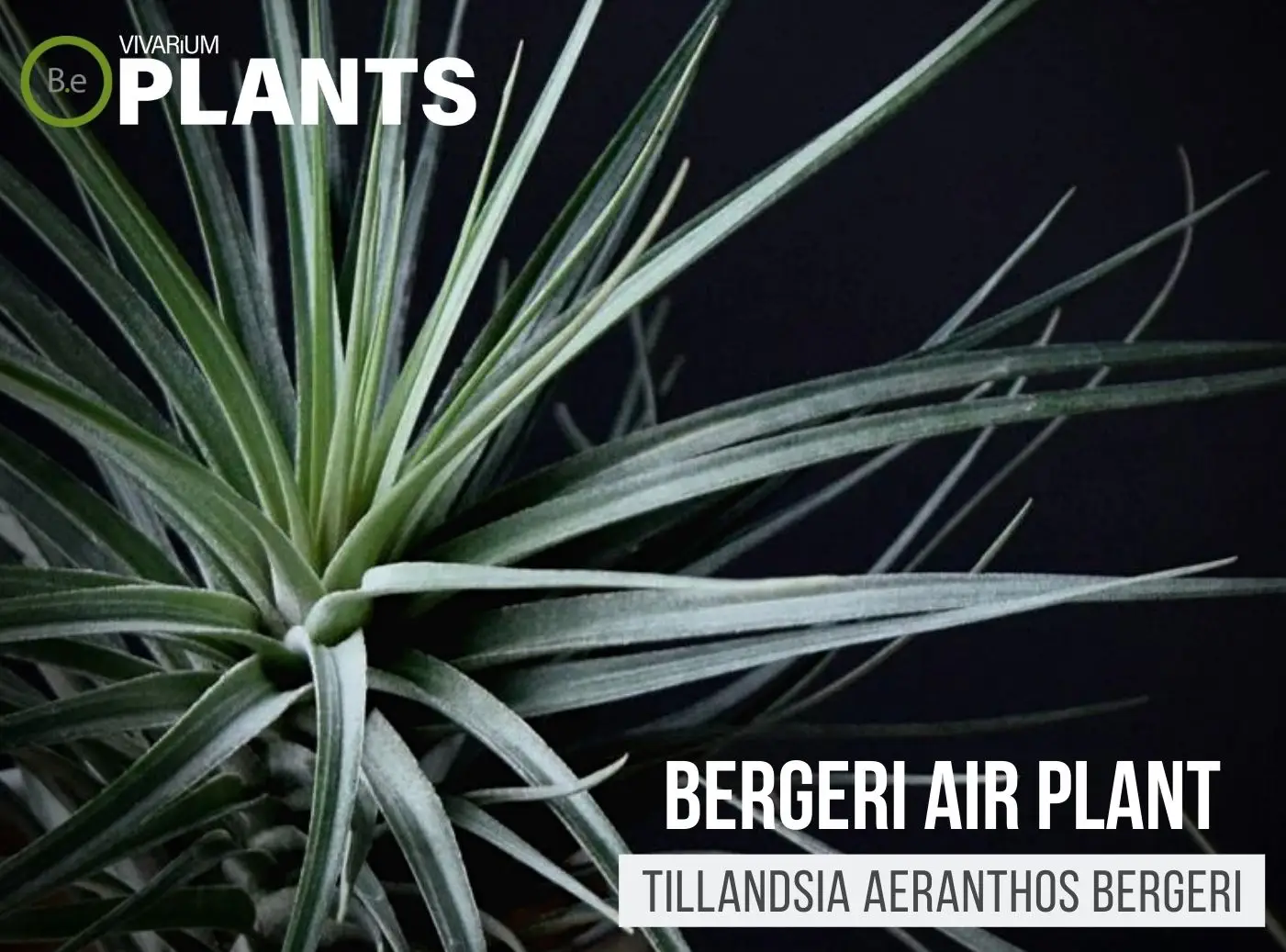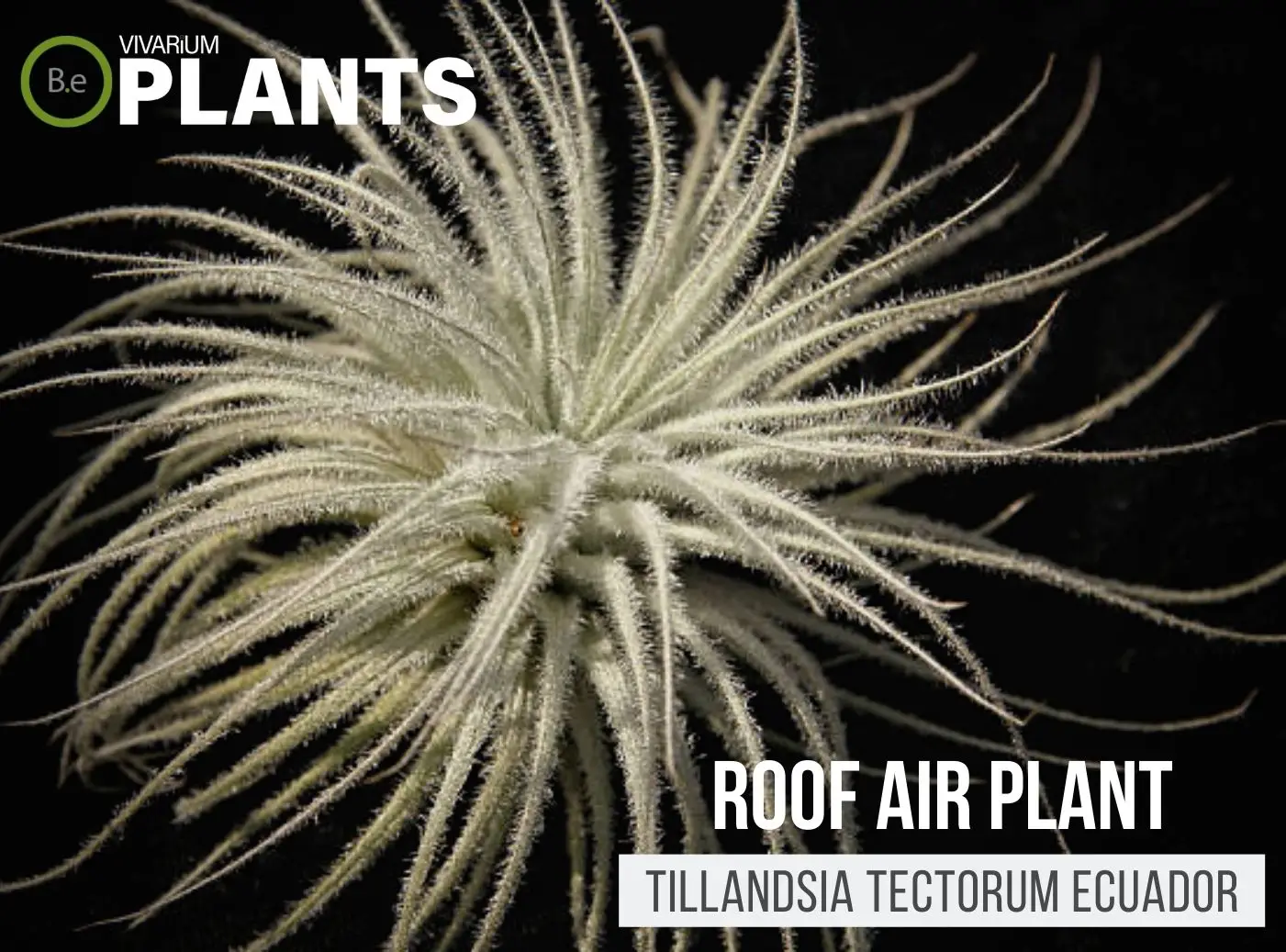Tillandsia brachycaulos is a unique terrarium air plant that can add an interesting feature to any terrarium setup.
It’s small size and thick foliage make it suitable for small and medium-sized vivariums, and it does well with or without animals.
This plant requires a bit of extra care and attention, so it’s best for hobbyists with some experience, but it’s worth it for its interesting look and textured leaves.
| Quick Stats: | |
|---|---|
| Scientific Name | Tillandsia brachycaulos Schltdl |
| Common Name | Tillandsia brachycaulos Schltdl |
| Family Name | Bromeliaceae |
| Habitat | Woodlands, Savannas |
| Temperature | 65°F to 90°F |
| Height | 2 to 12 inches |
| pH | 6.0 to 8.0 |
| Lighting | Bright, indirect |
What is a Tillandsia brachycaulos?
Tillandsia brachycaulos is a species of bromeliad that can be found in the woodlands and savannas of the south American Andes.
It is a slow-growing species that is typically 2 to 12 inches tall and sprawling and has thick foliage with stems shaped like a cylinder.
It has a unique coloration, with vibrant green leaves and olive-brown stems that are red near the base.
The leaves are covered in scales and have a soft, silky texture.


Tillandsia brachycaulos Facts
This plant blooms with bright purple flowers that attract hummingbirds, beetles, and other pollinators.
The flower petals are used to create a pigment for fabrics, leather, and cosmetics in South America.
The bright-colored flower helps it to stand out against predators.
It is a perfect addition to any enclosure, due to its hardy nature and its ability to purify the air in the enclosure.
Description
Tillandsia brachycaulos looks like a rosette of slender leaves that spirals around the stem.
The leaves are waxy and can range from vibrant green to sage green.
They are covered in silver-white scales, giving them a soft texture, and they develop a copper-like color near the base of the stem.
The stems are olive-brown and bright red near the base.
Habitat
Tillandsia brachycaulos is native to woodlands and savannas in the Ecuadorean Andes, where it grows in well-drained soil and humid or semi-humid climates.
It prefers temperatures between 65 and 90 degrees Fahrenheit (18-32 Celsius) and moderate sunlight.
It should not be exposed to direct sunlight.
pH Preference
Tillandsia brachycaulos prefers slightly more alkaline conditions with a pH range between 6.0 and 8.0.
This can be achieved by adding a custom soil mix with finely milled bark and crushed granite.
Vivarium Type
The brachycaulos air plant is quite an easy-going species.
With that in mind, it will not be too complicated when it comes to choosing the type of enclosure it is grown in.
It is best to try and replicate the plant’s natural habitat as much as possible.
Doing so will make it easier to provide this air plant with its basic needs.
The proper setup and theme of the enclosure will make a big difference to the overall look and health of the air plant.
Be sure to choose setups that are moist and high in humidity.
Here are recommended vivariums it will do well in:
-
- Paludariums – Half aquatic/ half terrain-based enclosure.
-
- Terrariums – Fully terrain-based enclosures with little to no aquatic features.
Vivarium Placement
The red-stemmed tillandsia should be planted in the middle of the tank to provide visual interest and air purification.
Keep the plant near the middle of the tank to provide the best light and air circulation.
It looks great when planted in clusters.
Substrate
The brachycaulos air plant should be planted in moist, well-draining terrarium soil or a pre-made soil mixture.
It does not require high-nutrient soil but does need some additional nitrogen and other minerals to stay healthy.
It is important to ensure proper drainage and air circulation to keep the plant from becoming waterlogged or moldy.
Lighting
Tillandsia brachycaulos do best with bright, indirect natural light or terrarium lights.
It does not do well in direct sunlight, and too much light can cause the leaves to burn or discolor.
It is important to adjust the lights so that the tank is evenly lit, with no hot spots.
Buy Tillandsia brachycaulos
When it comes to buying a red-stemmed tillandsia, there are a few things to keep in mind.
Making sure the plant is healthy when purchased is essential for its success in a vivarium.
Vegetation that is already in poor conditions will have a very hard time adjusting to new environments.
Click the image below to find out more about the current price and other relative info about this plant.
Tillandsia brachycaulos Care and Propagation
Tillandsia brachycaulos makes a great addition to any setup but requires a bit of extra care to stay healthy.
Regular misting is important to keep the roots and soil moist.
It also helps to be fertilized every 1 to 2 weeks with an appropriate liquid fertilizer.
If the plant is propagated correctly, it will produce bright purple flowers that attract pollinators.
How to Grow
Tillandsia brachycaulos can be propagated by dividing the rosettes from the parent plant or by collecting the seeds from the flowers.
When propagating, make sure to give the plant plenty of time to adjust to its new environment, as it can take some time for it to settle in.
Once the plant is established, it should be repotted every few years to help maintain proper air circulation and drainage.
Watering
Red-stemmed tillandsia is a semi-succulent plant and should be allowed to dry out between waterings.
During the growing season, the soil should be kept slightly damp.
In the winter, it should be watered less and the soil should be allowed to dry out completely between waterings.
It is important to never allow the plant to sit in standing water.
Plants Similar to Tillandsia brachycaulos
Adding diversity to an enclosure is key to an aesthetically pleasing setup.
Try mixing up the look of your vivarium with different flora that can easily co-exist in the same types of environment.
Furthermore, if you find the red-stemmed tillandsia hard to acquire or would like to consider something similar to this air plant…
Here are other terrarium plants you might find will do well with or in the place of Tillandsia brachycaulos:
Conclusion
Tillandsia brachycaulos is a unique and interesting bromeliad that can make a great addition to any place you decide to call home for it.
It prefers bright, indirect light and moist, well-draining soil.
It requires some extra care and attention to stay healthy, but it is worth it for the air purification and visual interest it provides.
With consistent care, it can grow and bloom, attracting pollinators and making your terrarium even more beautiful!
Frequently Asked Questions
Tillandsia Brachycaulos can be cared for by providing bright, indirect sunlight, high humidity, and frequent misting with lukewarm water. If using a substrate. ensure that the plant is planted in a well–draining potting medium such as orchid bark that won‘t retain too much moisture. Keeping the plant clean and dust–free will also help it thrive.




